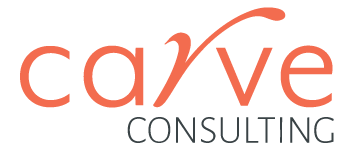So often in workshops, when I ask leaders if they know the difference between psychosocial safety and psychological safety, the answer is no.
After understanding the difference, and the volume of psychosocial complaints being made to Safe Work, the reaction is usually one of alarm. Then, leaders will share stories of feeling ill-equipped, or the heavy burden of dealing with an employee complaint.
So what’s the difference between psychosocial safety and psychological safety?
In its simplest form, psychosocial safety is legislated protection for employees’ mental health at work. It’s not a “nice to have” – it’s a mandatory requirement under every state’s WH&S Act. Australia is one of a handful of countries with legislation in place.
Psychological safety is an evidence-based approach popularised by Amy Edmondson, to create a culture where employees feel free to participate. You can’t have psychological safety when psychosocial hazards are present. I like to think of psychosocial safety as the foundation on which psychological safety can be built. (We’ll go into more detail on psychological safety next month.)
For those who’ve been in the workforce for 20+ years, psychosocial hazards were often things you just put up with to get ahead – toxic bosses, workplace bullies, saying yes to all extra work. Younger generations have clearer boundaries and are more comfortable speaking up. On the positive side, this calls out entrenched toxic behaviours – but it can also highlight expectation gaps. And therein lies the rub, when leaders often feel stuck.
Safe Work legislation includes 14 psychosocial hazards. Some are straightforward, like having adequate resources to do your job. Others, like work overload, may be an entrenched expectation and may lead to burnout. Workload can also be nuanced for different team members – experience, capability, and personal work habits all play a part.
The most commonly reported hazards? Psychological distress from work-related stress and bullying. While bullying should never be tolerated, we’re also hearing it used when people are really experiencing discomfort. Feeling uncomfortable due to performance feedback isn’t bullying – yet managers are often unsure how to respond when it’s labelled that way.
Psychosocial safety was once seen as an industrial issue, but legislation has brought safety into every workplace environment and every context. Only this week a major university was instructed by Safe Work to pause their organisation restructure due to employee complaints that the university had not done enough to mitigate the psychosocial risk of announcing its proposed restructure.
So what can you do to manage psychosocial hazards?
- Set the organisational foundations: Follow this step-by-step guide to creating a mentally healthy workplace.
- Build awareness: Psychosocial hazards aren’t just a HR issue. Help managers and employees understand what counts as a hazard and what to do if they have direct experience or have concerns.
- Be equipped to respond: Should an incident occur, follow Safe Work’s risk management process. The most common question leaders hear from workers’ compensation lawyers is: “Did you do enough?”
- Set expectations with your teams: Start at induction, or reset expectations with current team members, regarding feedback, manager and team member expectations, and available channels for speaking up.
- Regular check in conversations: Make regular time with each team member, where there is no agenda, just space to share their experience of work and understand the support they’re looking for. Adjust the frequency to make it relevant for each person and changes in workload and stress.
- Model and support sustainable work habits: Leaders and managers should model sustainable work habits and support team members to do the same, aligning with role and team expectations.
- Monitor for changes in employee sentiment: Use surveys and feedback channels to monitor employee mental health at work, particularly during times of change.
- Be aware: Early indicators that hazards exist may include changes in employees behaviour, increased sick days, missed deadlines, throw away comments or rumours. The earlier you notice, the easier it is to resolve.

